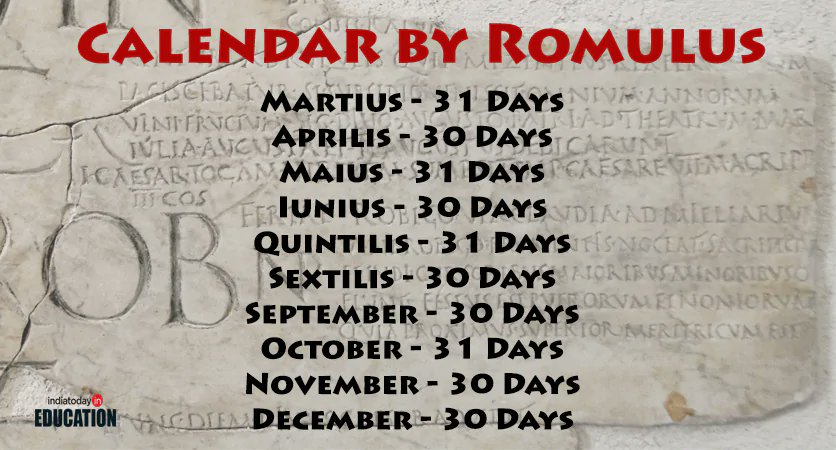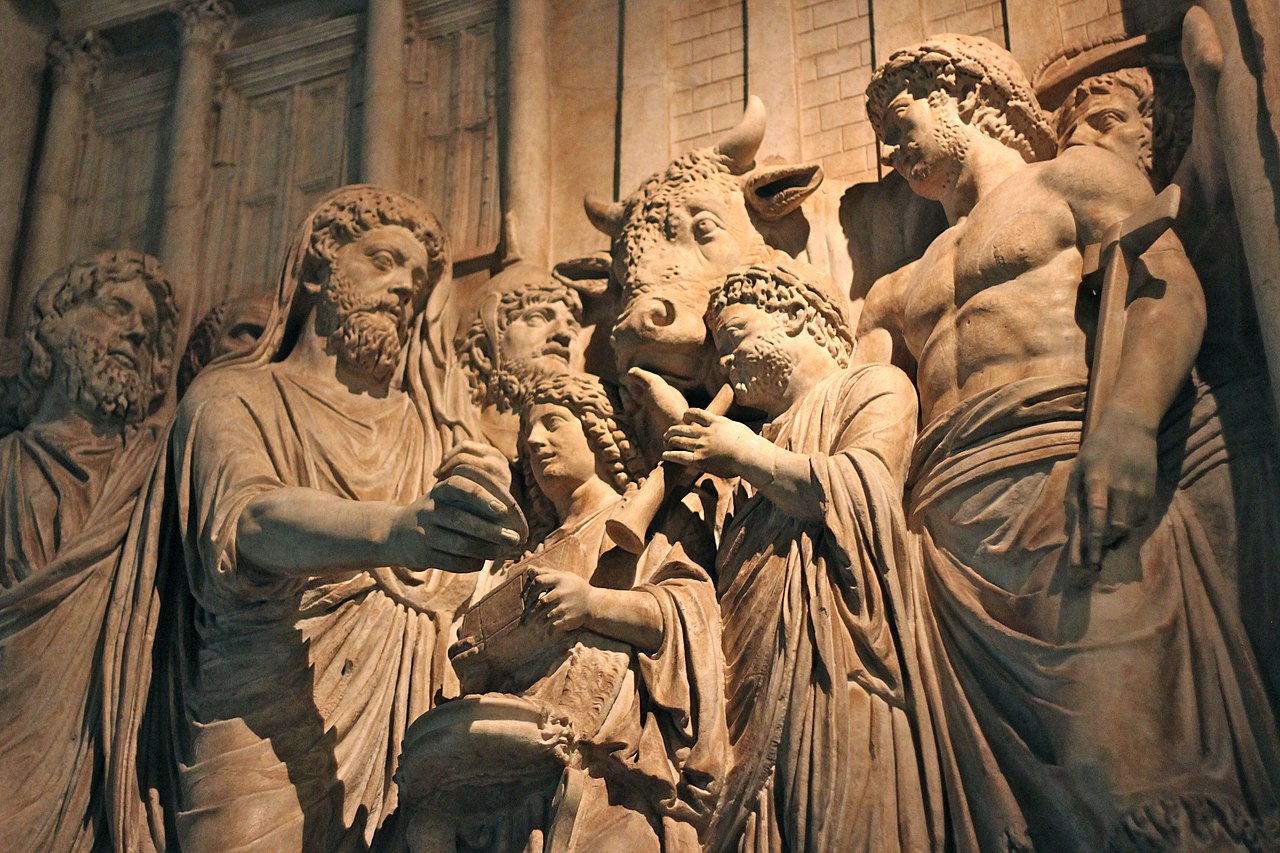
Unless you’re a child, you’re probably too used to February containing 28 days (29 on leap years). So you just don’t really think anything about it. So why does February have so few days? And why is December the 12th month instead of the 10th, as its name in Latin suggests? Hint: it involves Julius Caesar and a Gregorian monk.
Here’s a brief history of our modern calendar.
The ancient beginning
The calendar’s story begins in Ancient Rome. Its founder and first king, the mythical Romulus, was attributed with creating the Roman calendar. It had 10 months, each of 30 or 31 days, beginning in March and ending in December. Winter was just one long, unnamed period of time.

Then Rome’s second king, the quasi-mythical Numa Pompilius, came along and reformed the calendar. In around 700 B.C., he introduced two new months after December at the end of the year, during winter, called Ianuarius and Februarius – or January and February.
This calendar, like its predecessor, was lunar. That means it was based on the cycles of the moon rather than the sun. The Romans borrowed from the Greeks, who had calculated that each lunar cycle lasted 29.5 days. So 12 of them, forming the lunar year, lasted 354 days.
Superstition altered things
Things were complicated by Roman superstitions about even numbers, which were considered unlucky. As Roman society was deeply religious, and the priests were in charge of organising the calendar, filling it with festivals and rites and sacrifices.

So, to avoid these inauspicious even numbers, Numa subtracted one day from each of the previous 30 day months and added a single day to the lunar year to make it an odd number: 355. That left 57 days for Numa to split between the two new months, January and February.
He gave January 29 days, leaving February with 28. It was all down to simple mathematics that one of the 12 months had to have an even number of days. Why he chose February one can only speculate. Some believe it was because Roman festivals of the dead were celebrated in that month.
The trouble with Numa’s calendar was that, at 355 days, it fell 10 days short of the 365-day solar year. This is a problem for all lunar calendars because, over time, they drift away from the solar year and so the dates of festivals and seasons fall out of sync with it.
The Lunisolar calendar
To fix this, the Roman priests were tasked with adding an “intercalary” month of 22 or 23 days every two years, called Mercedonius. In these leap years, Mercedonius was added to the end of February, and those years lasted 377 or 378 days. And so this calendar became lunisolar.
But this system was open to abuse, because Roman officials served annual terms. The priests in charge of adding those intercalary months were also politicians, and they often made years shorter or longer depending on whether their enemies or allies were in power.
By the 1st century B.C., years of civil war and political strife had caused this calendar to fall completely out of sync with the solar year. So when Julius Caesar defeated Pompey the Great and became the most powerful man in Rome, he set out to fix the old dating system.
The Julian calendar

With help from the leading mathematicians of the day, Julius Caesar created the Julian Calendar. A year was now 365 days long, with an extra day added once every four years to make up for the real length of the solar year, which had long ago been calculated as 365.25 days.
Caesar used these extra 10 days to make every month either 30 or 31 days long. That’s apart from February, which was left with its traditional 28 days. And in leap years, February was given the extra day, making it 29 days long. That decision two thousand years ago has stuck.
The year of Julius Caesar’s calendar reform – 46 B.C. – was the longest year in history, literally. To make sure his new calendar started at the right point, synchronised with the solar year, he had to add three intercalary months. And so 46 B.C. was 445 days long!
A change in the names
At some point, January and February were moved to the beginning rather than the end of the calendar. But the months kept their old names, some of which were numerical. An example is December, which comes from the Latin for ten (decem). It may be the 12th month now, but it was the 10th when it started.
However, some of the month names were changed. Quintilis (the fifth month) became July in honour of Julius Caesar, and Sextilis (the sixth month) became August in honour of Augustus, Rome’s first emperor.

But this system had a flaw – the solar year is actually slightly less than 365.25 days. So the Julian Calendar gained one day every 131 years. That might seem insignificant, but the Julian Calendar was used in Western Europe for over a millennia.
The Gregorian calendar
In 1582, Pope Gregory XVIII instituted his own reform, correcting the errors of the Julian Calendar, which had drifted 10 days away from the solar year. The spacing of leap years was changed and those ten days removed; in 1582 the 4th October was followed by the 15th October.
The Gregorian Calendar was originally only used in Catholic countries, but soon enough it spread to the rest of Europe and from there to the rest of the world. It still retains all the quirks of the old Roman calendars – including February and its baffling 28 days.










